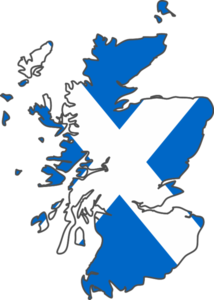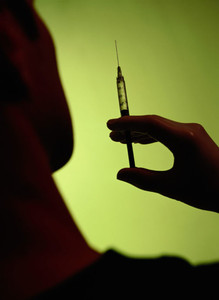Scotland has introduced a number of reforms and initiatives in recent years to enhance the prescribing of low cost generics, thereby saving money to help fund increased volumes and new premium priced drugs [1, 2]. However, there have been situations where no specific initiatives have been introduced [3, 4]. Consequently, analysis of the various initiatives in Scotland could provide examples to other countries seeking additional measures to further enhance their prescribing efficiency.
Supply-side measures in Scotland include greater transparency in the manufacture and pricing of generics, as well as rebates offered by generics manufacturers to wholesalers and pharmacists to enhance the dispensing of their generics. Such measures have resulted in reimbursed prices of high volume generics ranging from just 3% to 12% of pre-patent loss prices [1.2]. Low prices are helped by high voluntary International Nonproprietary Name (INN) prescribing in Scotland, e.g. between 98% to 99% of total utilization [defined daily dose (DDD) basis] of high volume multiple sourced drugs including anti-depressants, atypical antipsychotic drugs, proton pump inhibitors (PPIs), renin-angiotensin inhibitor drugs and statins [2]. These high rates have been achieved through physicians trained in medical school to prescribe by INN, with follow-up in the community coupled with IT systems [1, 2].
Multiple demand-side measures including educational activities such as formularies and academic detailing, prescribing targets and financial incentive schemes, resulted in increased prescribing of generic omeprazole once available. This led to reimbursed expenditure for PPIs in 2010, 56% below 2001 levels despite a 3-fold increase in utilization (DDD basis). It is estimated that PPI expenditure would have been GBP 159 million greater in 2010 for the same utilization without these measures [1, 2]. Similar measures for statins resulted in reimbursed expenditure only increasing by 7% in 2010 compared with 2001 despite a 6.2-fold increase in utilization. Again, it is estimated that expenditure on statins would have been GBP 290 million greater in 2010 without these multiple demand-side measures [1, 2].
Similar multiple demand-side measures limited the prescribing of angiotensin receptor blockers (ARBs) versus generic angiotensin-converting enzyme inhibitors (ACEIs) where these are seen as similar in nearly all patients [2]. The low utilization of ARBs in Scotland was similar to Austria and Croatia, which had both introduced prescribing restrictions for ARBs [2]. This differed to Portugal with its limited demand-side measures, and led to prescribing of ARBs in Portugal reaching 44% of total renin-angiotensin inhibitor drugs (DDD basis) in 2007 versus only 19% in Scotland. This increased reimbursed expenditure by 41% in Portugal in 2007 vs 2001 versus stable expenditure in Scotland despite a 159% increase in utilization [2]. A similar picture was seen with selective serotonin reuptake inhibitors (SSRIs), where multiple demand-side measures limited the prescribing of escitalopram to just 7% of total SSRIs (DDD basis) in 2007 versus Ireland (31% in 2008) and Portugal (17% in 2007) with their limited demand-side measures. This is because the authorities in Scotland believed there was no difference in effectiveness between escitalopram and citalopram [2]. As a result, reimbursed expenditure on SSRIs decreased by 59% in Scotland in 2007 vs 2001 compared with a 72% increase in Ireland (2008 vs 2001) and 93% in Portugal (2007 vs 2001) [2].
The authorities in Scotland took a pragmatic approach to the availability of generic clopidogrel recommending its prescribing rather than Plavix in view of the potential resource savings and no perceived problems, despite a different salt and lower number of indications initially [5]. This approach was similar to that of other European countries, in spite of the efforts of the originator company, which resulted in the authorities fining the originator company for its disinformation campaigns [2].
However, no specific measures were introduced in Scotland following the availability of generic losartan, with all ARBs seen as essentially similar for hypertension and heart failure [3]. This was for a variety of reasons including other areas of focus for quality improvement initiatives and the fact that other generic ARBs would shortly become available [3]. As a result, there was no change in the utilization of losartan post generics [3]. This suggests no ‘spill over’ of initiatives between classes, even if closely related, to effect changes in physician prescribing habits [3]. There was a similar situation following the availability of generic risperidone, with again no specific initiatives and its utilization actually falling following the introduction of generics as a % of total selected atypical antipsychotic drug utilization (DDD basis) [4]. This was similar to other European countries [4]. However, it is recognized that there is a greater need to tailor the pharmacological treatment of patients with schizophrenia and bipolar diseases. Consequently, it is likely that any demand-side measures will have a limited effect in these complex disease areas [4].
In conclusion, multiple supply- and demand-side measures appreciably improved prescribing efficiency in Scotland for ACEIs versus ARBs, PPIs, SSRIs and statins, providing guidance to other health authorities. The various findings suggest that authorities need to introduce multiple measures to affect changes in physician prescribing habits otherwise there could be disappointment with the outcome. This is because there does not appear to be any spill-over effect to change physician prescribing habits even in closely related classes.
Abstracted by Dr Brian Godman, Member of International Editorial Advisory Board, GaBI Journal.
Editor’s comment
If you are interested in contributing a research paper in a similar area to GaBI Journal, please send us your submission here.
Related articles
Prescribing in Scotland increases but drug costs drop
Cost savings due to prescribing of generic PPIs and statins in Scotland
Impact of measures to encourage generics prescribing in Scotland
Prescribing of generic PPIs and statins in Scotland
References
1. Bennie M, Godman B, Bishop I, Campbell S. Multiple initiatives continue to enhance the prescribing efficiency for the proton pump inhibitors and statins in Scotland. Expert Rev Pharmacoecon Outcomes Res. 2012;12(1):125-30.
2. Godman B, Bishop I, Finlayson AE, Campbell S, H-Y Kwon, Bennie M. Reforms and initiatives in Scotland in recent years to encourage the prescribing of generic drugs, their influence and implications for other countries. Expert Rev Pharmacoecon Outcomes Res. 2013;13(4):469-82.
3. Bennie M, Bishop I, Godman B, Campbell S, et al. Are prescribing initiatives readily transferable across classes: the case of generic losartan in Scotland? Qual Prim Care. 2013;21(1):7-15.
4. Bennie M, Bishop I, Godman B, Barbui C, et al. Are specific initiatives required to enhance the prescribing of generic atypical antipsychotics in Scotland?; International implications. Int J Clin Pract. 2013;67(2):170-80.
5. Baumgärtel C, Godman B, Malmström R, Andersen M, et al. What lessons can be learned from the launch of generic clopidogrel? Generics and Biosimilars Initiative Journal (GaBI Journal). 2012;1(2):58-68. doi:10.5639/gabij.2012.0102.016
Permission granted to reproduce for personal and non-commercial use only. All other reproduction, copy or reprinting of all or part of any ‘Content’ found on this website is strictly prohibited without the prior consent of the publisher. Contact the publisher to obtain permission before redistributing.
Copyright – Unless otherwise stated all contents of this website are © 2013 Pro Pharma Communications International. All Rights Reserved.








 0
0











Post your comment